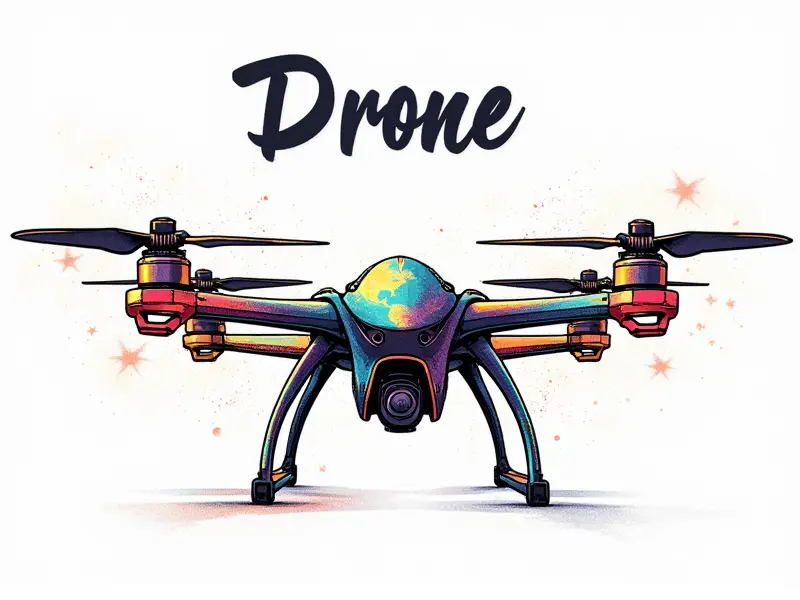How to land a Syma drone safely

Master Safe Landings with Your Syma Drone
Welcome to the ultimate guide on how to land your Syma drone safely. Whether you're a beginner or an experienced pilot, mastering safe landing techniques is crucial for protecting your investment and ensuring smooth descents every time.
Avoid Crashes: Syma Drone Landing Techniques
- Pre-flight Checks: Before taking off, ensure that your drone's battery level is sufficient and that all propellers are securely attached. Check for any obstructions in the landing area.
- Choose a Safe Area: Land in an open space free of obstacles such as trees or buildings to avoid collisions during descent.
- Reduce Speed Gradually: Slow down your drone's speed gradually before initiating the landing process. This helps prevent sudden movements that could lead to crashes.
Syma Drone Safety Guide: Smooth Descents
To achieve smooth descents with your Syma drone, follow these steps:
- Monitor Battery Levels: Keep an eye on the battery level during flight. Low batteries can cause erratic behavior in drones.
- Use Auto-Landing Features: Many modern Syma drones come equipped with auto-landing features that automatically initiate a descent when the battery is low or when you press the landing button.
- Avoid Windy Conditions: Strong winds can make it difficult to control your drone during landing. Wait for calm conditions before attempting to land.
Perfect Your Syma Drone Touchdown Skills
To perfect your touchdown skills, practice the following techniques:
- Hover and Adjust: Hover at a low altitude above your landing spot and make small adjustments to ensure you land precisely where you want.
- Land Gently: Aim for a soft and controlled touchdown. Avoid slamming the drone onto the ground, as this can damage propellers or other components.
- Practice in Different Environments: Experiment with landing your Syma drone on various surfaces such as grass, concrete, and sand to get used to different conditions.
Achieve Perfect Syma Drone Touchdowns
To achieve perfect touchdown landings, consider the following tips:
- Use Visual Cues: Look for visual cues like lines or patterns on the ground to help you gauge your altitude and position accurately.
- Landing Gear Placement: Ensure that your drone's landing gear is properly aligned with the landing surface. This helps distribute weight evenly during touchdown.
- Post-Landing Inspection: After each flight, inspect your Syma drone for any signs of damage or wear and tear. Address issues promptly to prevent further problems.
The Art of Smooth Syma Drone Landings
Mastery of smooth landings is an art that requires patience and practice. Here are some advanced techniques:
- Controlled Hovering: Practice hovering your drone at different altitudes to improve your control over its movements.
- Sudden Obstacle Avoidance: Learn how to quickly adjust your drone's course if an unexpected obstacle appears during descent.
- Soft Surface Landings: Develop techniques for landing on soft surfaces like grass or sand without causing damage.
Safe and Easy Landings with Syma Drones
Safeguard your investment by following these guidelines:
- Regular Maintenance: Keep your drone in good condition through regular cleaning and maintenance checks.
- Weather Conditions: Avoid flying during extreme weather conditions such as heavy rain or strong winds.
- Landing Spot Selection: Always choose a landing spot that is free from obstacles and has enough space for your drone to land safely.
No More Crashes: Guide to Syma Landings
To prevent crashes, adhere to these best practices:
- Proper Training: Take the time to learn proper flying techniques and landing procedures from reputable sources or experienced pilots.
- Flight Logs: Keep detailed logs of your flights, noting any issues encountered during landings. This can help you identify patterns and improve over time.
- Emergency Protocols: Have a plan in place for emergency situations such as battery failure or sudden loss of control.
Safeguard Your Syma Drone with Perfect Landings
To safeguard your drone, follow these safety tips:
- Battery Management: Always ensure that your drone's battery is fully charged before each flight. Low batteries can lead to sudden drops and crashes.
- Landing Gear Inspection: Regularly inspect the landing gear for any signs of wear or damage. Replace parts as needed to maintain optimal performance.
- Environmental Awareness: Be aware of your surroundings at all times, especially during descent and touchdown phases.
Mastering Safe Landings for Syma Drones
Mastery of safe landings is essential for any drone pilot. By following the tips outlined in this guide, you can significantly reduce the risk of crashes and ensure that your Syma drone remains in top condition.
Conclusion
Landing a Syma drone safely requires practice, patience, and adherence to proper techniques. By mastering these skills, you'll not only protect your investment but also enhance your overall flying experience. Remember to always prioritize safety and follow best practices for smooth and controlled landings.

